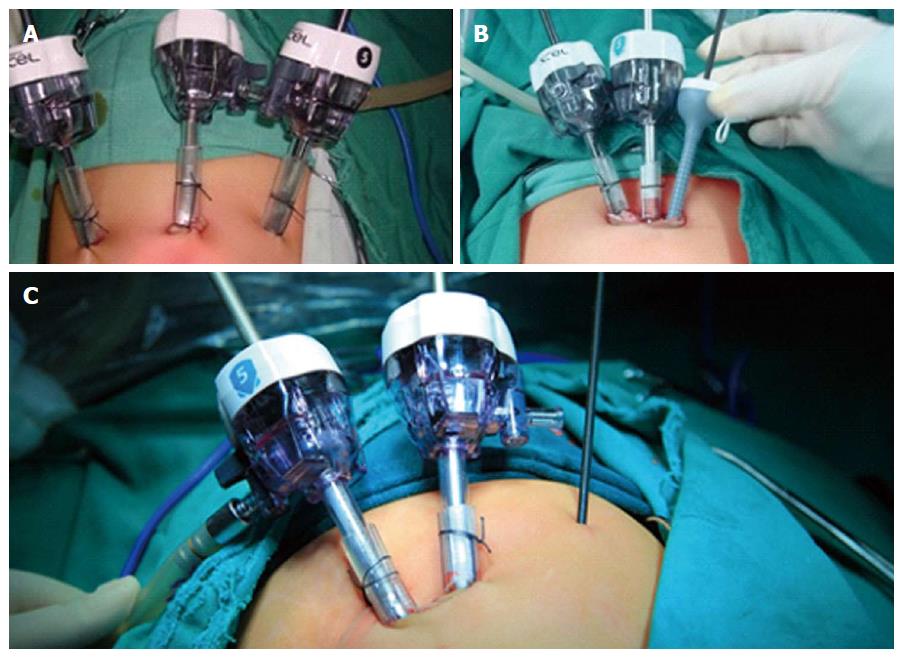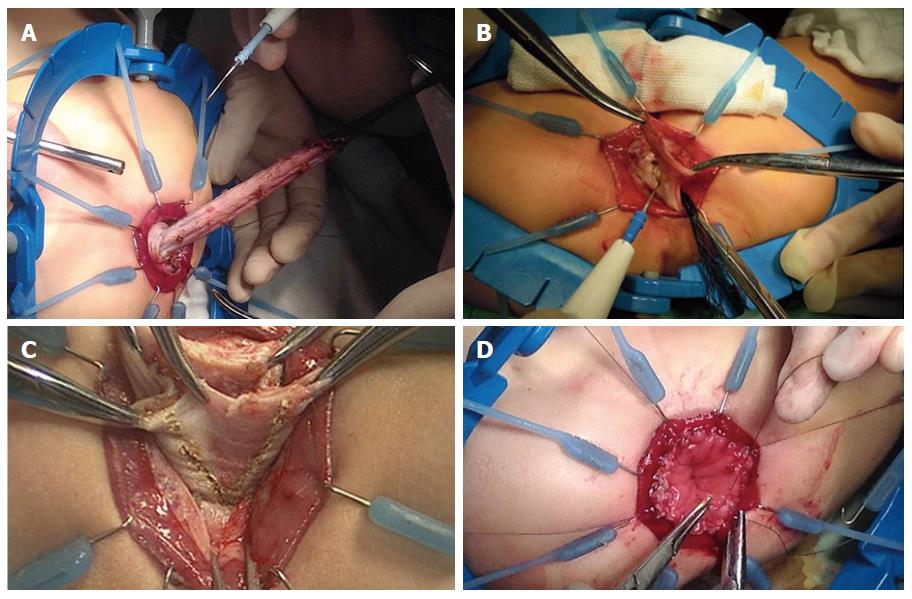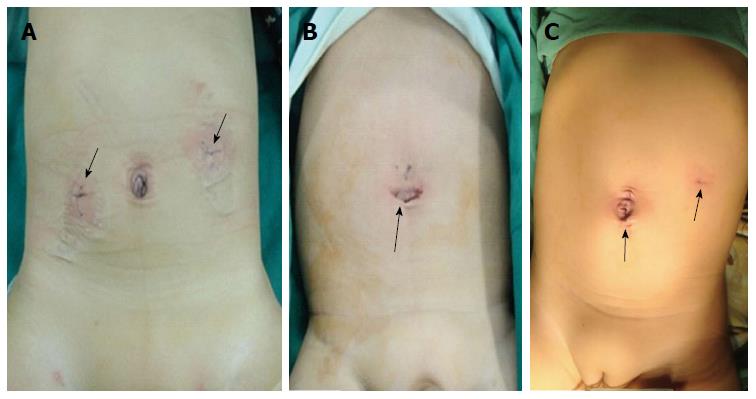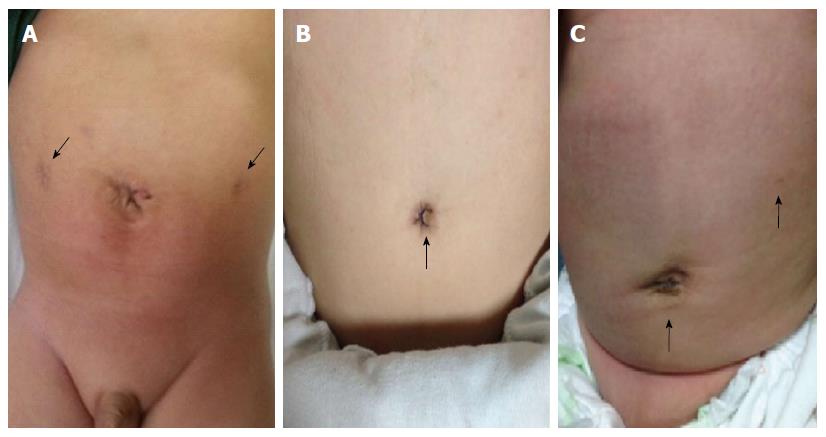Copyright
©The Author(s) 2015.
World J Gastroenterol. Aug 7, 2015; 21(29): 8903-8911
Published online Aug 7, 2015. doi: 10.3748/wjg.v21.i29.8903
Published online Aug 7, 2015. doi: 10.3748/wjg.v21.i29.8903
Figure 1 Positioning of trocars and instruments.
A: Conventional laparoscopic pull-through; B: Single-incision laparoscopic pull-through; and C: Hybrid single-incision laparoscopic pull-through procedure.
Figure 2 Resection of the necessary amount of the mobilized colon and coloanal anastomosis with the short cuff.
A: Rectal submucosa dissection with a long cuff; B: Cuff shortening; C: Partial resection of the muscular cuff with a “V” shape of the posterior wall; D: Coloanal anastomosis after the endorectal pull-through and resection of the necessary amount of colon.
Figure 3 Postoperative appearance of umbilicus and abdominal wound.
A: Conventional laparoscopic pull-through; B: Single-incision laparoscopic pull-through; and C: Hybrid single-incision laparoscopic pull-through procedure.
Figure 4 Appearance of abdominal scars on follow-up.
A: Conventional laparoscopic pull-through; B: Single-incision laparoscopic pull-through; and C: Hybrid single-incision laparoscopic pull-through procedure.
- Citation: Aubdoollah TH, Li K, Zhang X, Li S, Yang L, Lei HY, Dolo PR, Xiang XC, Cao GQ, Wang GB, Tang ST. Clinical outcomes and ergonomics analysis of three laparoscopic techniques for Hirschsprung's disease. World J Gastroenterol 2015; 21(29): 8903-8911
- URL: https://www.wjgnet.com/1007-9327/full/v21/i29/8903.htm
- DOI: https://dx.doi.org/10.3748/wjg.v21.i29.8903
















